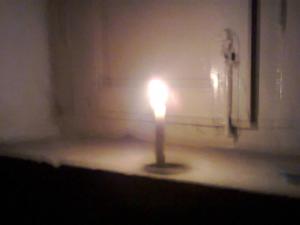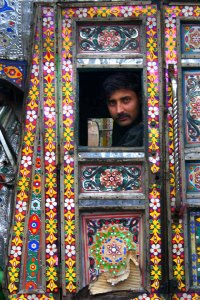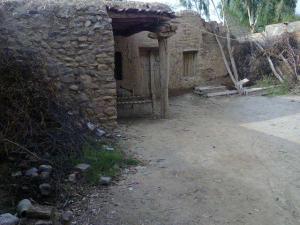I arrived in Pakistan just before President Zardari became leader of that country, his party, the People’s Party, swept to power by the popular vote after the assassination of his wife, Benazir Bhutto. He promised to stop “load-shedding” as power cuts are called in Pakistan. Five years later there has been little progress. Some cities such as Lahore have less than twelve hours of electricity per day. Factories and small businesses have closed all across the Punjab province (where the opposition party, the Muslim League have control of the provincial government) and this obviously has done the economy a lot of harm as the Punjab is not only the ‘breadbasket’ of Pakistan but also the industrial centre.
It is hard to describe how dreadful it is to have no electricity in the heat of the day. You have to waft hot air around with a hand fan, unless you can afford to fuel a generator – most people can’t. For a country with so much sunshine, one would think that solar energy would be utilized – but it isn’t. Politicians do not seem to have the interests of their country uppermost in their policy-making. Indeed, people believe that the photovoltaic batteries are hot water tanks, so think that if solar panels can only produce that volume of hot water, it isn’t worth the cost of installing them. Clearly there is a need for people to be better informed and educated.
When I first met people the one thing they all said was, “When you go back to the West, tell people that not all Pakistanis are terrorists.” Indeed they are not. The ordinary Pakistani was, when I arrived there, afraid to go out very far for fear of bombings. In bazaars people were very watchful as well as when travelling in the colourful ‘wagons’ and motorized rickshaws. There were bombings at Shia shrines and these continue. Every day on the TV news channels there are reports of bombings in some part of Pakistan. Shoppers are killed, bazaars often targeted, as well as police and army checkpoints. Schools are also targets and the one I worked at had armed security guards on the high gates and snipers on the roof tops. There were threats against schools and those which educate girls are, unfortunately, targets for militants. Malala Yousafzai was a victim of such people – not only could she read and write, but she also wrote online about her experiences of living with the threats of local militants.
The photo above shows a girls’ school which was destroyed by the Pakistani Taliban, allegedly, in the province of Khyber-Paktoonkhwa (formerly the North-West Frontier Province). Looking at the building one wonders what kind of a school it was. To Western eyes it is a primitive building and certainly not like the purpose-built schools in Lahore. However it was a school where girls were educated – sadly they are not being educated now.
The politicians of Pakistan have signed the UN Convention on the Rights of the Child; however there is no sign that they have understood its significance. Girls in particular are being targeted by militants who believe that girls should not be educated – and this despite the fact that their illustrious prophet clearly believed in the education of women. There are also the children who can be seen scavenging on rubbish dumps. They have no chance of getting an education. There are also children of poor families who don’t go to school because their parents cannot afford shoes for them – much less uniforms and books. It seems that the members of the Pakistani government have a vested interest in not promoting education for all. If the majority of the population were educated then Pakistan might have people in power who had the will to improve the situation of its people and its economy. It seems the poorer people of Pakistan are in a no-win situation.
Related articles
- Sights of Pakistan (lynnee8.wordpress.com)
- Murree, Punjab Province, Pakistan – Perhaps Not a Destination for Foreign Visitors (lynnee8.wordpress.com)





Well Its not the case everywhere in Pakistan. The area where I live Wah Cantt has hundred percent literacy rate and it is considered the only place in whole Asia with such literacy rate. As far the education for girls is concern yes there are few places where it is considered bad but ironically if you compare the statistics of examination and results girls are more educated then boys. poverty has caused problems but if you look at the statistics of America more then half students drop off education before finishing high school whats their problem? Do think on these terms.
LikeLike
But what percentage of girls are educated from the poorer families? That is that is the point. There is actually no comparison if you include the underclasses. They really can’t afford to send their children to the schools we teach at!
LikeLike
Pingback: Better to Travel Hopefully… to Thailand | Writing and Travel
Pingback: Pakistan: after the May 2013 Election | Writing and Travel
Pingback: Muharram in Rawalpindi Pakistan, 2013 | Writing and Travel